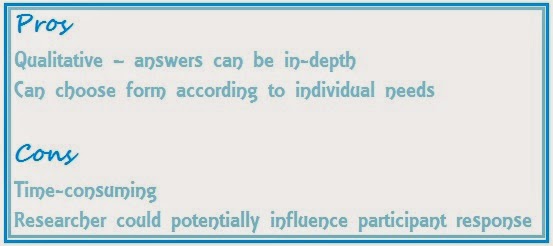Theatricalising Femininity: Part Two
The distinctive performance genre of Commedia dell’Arte – notable for use of mask, stock characters, and improvisation – is also considered a contributor to modern understandings of burlesque. (It is notable that Commedia troupes included female players at a time when women were banned from most public stages, potentially adding an unsettling sense of destabilising social constructs.)
Image Source: carnevale.venizia.it
The genre was artist led (dell’Arte), and thus placed in opposition to the prevailing literary dominance of elite theatre. Dwight Conquergood calls this the ‘class-based arrogance of scriptocenterism’[1], which places scripted theatre in a hierarchy above that of ‘low’ entertainment. However, Conquergood perceives experiential and embodied learning a superior form of knowledge, referring to it as ‘complex, finely nuanced meaning that is embodied, tacit, intoned, gestured, improvised, coexperienced, covert – and all the more deeply meaningful because of its refusal to be spelled out.’[2] Burlesque performers utilise their bodies as performative signifiers of experiential learning, potentially making these ‘low’ genres more meaningful and impactful than traditional forms of performance.
Modern burlesque often carries echoes of Commedia dell’Arte in its use of stock characters, and political and social commentary, and can emphasise the genre’s ability for performers to present a self-expressive ‘challenge to the dominant order’;[3] by perverting an initial visual expectation the burlesque performer does not adhere to notions of ‘what the patriarchy has defined, designed, distributed, and commodified as titillating to heterosexual males.’[4]
Image Source: commedia.klingvall.com
In seventeenth-century France, Commedia was refined, regulated, and took folk and fairy stories as their main inspirations, and this influenced the English tradition of Pantomime. Pantomime continues to be a popular theatrical form, and still features recognisable characters, contrived happy endings, and clowns who mock the powerful through their physicality and wit. The clowns are usually anachronistic to the setting, such as the traditional British Policemen in Aladdin, which, through causing them to become figures of absurdity, permits audiences to question their roles in society at large.
Another pantomime trope seen in burlesque is gender-subversion. In pantomime, the leading male role is often played by a female actor, and the ‘Dame’ is always a male actor in excessive, cartoonish costume and make-up. Burlesque performers play with gender identities, in what Allan calls ‘female to female drag, where notions of femininity and sexual prowess were spoofed and exaggerated.’[5] Costumes, including corsets and tight dresses, draw attention to amplified breasts, waist, and hips, theatrically creating an archetypal hourglass female silhouette. The striptease symbolically undermines this hyperbolic illusion, as the performer exposes and reasserts her natural, rather than forced or artificial, femininity.
Tempest Rose compares Burlesque to pantomime, stating that ‘Burlesque is clowning the idea of femininity, and what it means to be a woman.’[6] For example, when a Burlesque performer reveals her breasts, nipples are covered with decorated tassels, which many burlesque performers then ‘twirl’. Since breasts are a highly sexualised gender signifier, to use them to spin crystal-covered tassels causes the erotic to become ridiculous, undermines overt sexuality, and reasserts the performers' ownership of her body.
Image Source: chryscolumbine.com
Jacki Willson sees parallels between a rise in the popularity of Burlesque entertainment and increasing independent female agency, as women wish to be ‘both the sexy (even down and dirty) object of the gaze and the empowered subject who gazes’.[7] Burlesque, like pantomime, often disregards the theatre’s ‘fourth-wall’: performers look back in unmediated address with audiences, they are the observed and the observer. Undermining opposing claims that Burlesque merely ‘translates into being a classical subject of the male gaze: pretty, passive, performing, and sexually alluring’[8], the direct gaze challenges traditional cultural depictions of women with downcast eyes, signifying submission and vulnerability, and reasserts the performers authority, power, self-awareness and control. [9]
[1] Dwight Conquergood, ‘Performance Studies: Interventions and Radical Research’, TDR 46.2, (Summer 2002), p.147.
[2] Conquergood, ‘Performance Studies’, p.146.
[3] Kaitlyn Regehr, ‘The Rise of Recreational Burlesque: Bumping and Grinding Towards Empowerment’, Sexuality & Culture, 16, (2011), 134–157, p.143.
[4]
[5] Kirsty Lucinda Allan, ‘Embracing the Taboo’, Burlesque Bible, (Bath: Anthem Publishing Ltd, 2011), p.30.
[6]
[7] Jackie Willson, ‘The Happy Stripper: Pleasures and Politics of the New Burlesque’, (London and New York: I.B.Tauris & Co Ltd, 2008), Amazon Kindle e-book, (Introduction, Paragraph 1, Location 129), [emphasis in original].
[8] Siebler, ‘What's so feminist…?’, p.565.
[9] Allan and Barbara Pease, ‘The Definitive Book of Body Language’, (London: Orion, 2004), p.174.






Comments
Post a Comment